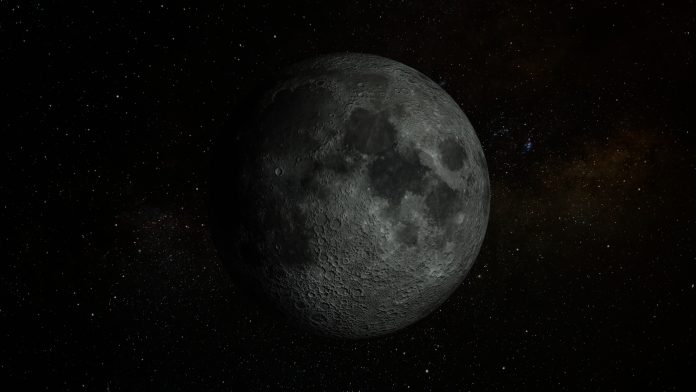Lunar swirls, those mesmerising light-coloured patterns illuminating the Moon’s surface, have always amazed astronomers and scientists
Even visible through backyard telescopes, these sinuous features resemble delicate brushstrokes on a celestial canvas, but their origins have remained a mystery, until now.
Finding the origins of lunar swirls
Recent advancements in modelling and spacecraft data have brought us closer to unravelling the enigma of lunar swirls. These swirls, found across various lunar landscapes, have been found to harbour magnetised rocks.
These rocks play a crucial role in deflecting the relentless bombardment of solar wind particles that constantly pummel the Moon’s surface. As a result, the swirls retain their light hue while adjacent areas darken over time due to chemical reactions induced by these collisions.
How did these rocks within the swirls become magnetised?
The Moon lacks a global magnetic field today, raising questions about the source of these magnetic anomalies. One theory involves impacts from meteorites, which frequently deliver iron-rich materials to the lunar surface. However, some swirls exhibit characteristics that defy this explanation, prompting researchers to explore alternative hypotheses.
Michael J. Krawczynski, an associate professor at Washington University in St. Louis, suggests another intriguing possibility: subsurface magmatism. His team’s experiments have shown that underground lava flows cooling in a magnetic field could feasibly magnetise the swirls. This hypothesis hinges on the presence of ilmenite, a mineral abundant on the Moon, which, under specific conditions, can produce magnetisable iron metal particles.
“Our analog experiments showed that at lunar conditions, we could create the magnetizable material that we needed,” explained Krawczynski. “So, it’s plausible that these swirls are caused by subsurface magma,” said Krawczynski, who is a faculty fellow in the university’s McDonnell Center for the Space Sciences.”
Luna geology
Understanding the origin of these swirls is not just an academic pursuit; it holds implications for our understanding of lunar geology, the history of lunar magnetic fields, and broader planetary processes. Insights gained from this research could also inform future lunar missions, including NASA’s planned rover expedition to explore the Reiner Gamma swirl area in 2025 as part of the Lunar Vertex mission.
Krawczynski emphasised the significance of high titanium content in underground magma for generating these magnetic anomalies. While previous studies have hinted at reactions in lunar samples from the Apollo missions and lunar meteorites, the current research underscores the potential of unseen lava flows to enhance metal-forming reactions underground.
“If we could just drill down, we could see if this reaction was happening,” Krawczynski noted. “That would be great, but it’s not possible yet. Right now, we’re stuck with the surface.”











